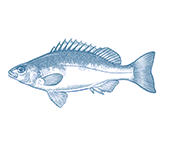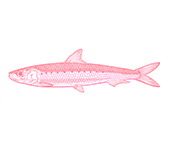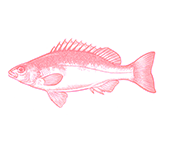




- Eat Less
Wild Caught
Region:
WA
- In WA, Octopus is caught in a developmental fishery that uses unbaited and baited traps and pots. Some octopus are also taken as bycatch in pot fisheries targeting rock lobsters.
- Although there is limited stock status information for the species of octopus caught, octopus generally grow and reproduce quickly, and populations are resilient to fishing pressure.
- The octopus species primarily caught in WA has recently been found to be a separate species to common octopus found on Australia’s east coast. Fishers and managers have invested in research to better understand and manage the fishery, which is welcome.
- Rapidly increasing catches are cause for some concern, as it is not yet clear whether management arrangements in this developmental fishery can effectively restrain fishing impacts. There is no evidence that serious overfishing is occurring, however.
- Octopus pot and trap fisheries are highly targeted, have very low impacts on seafloor habitats, and fishing poses a low risk to protected species.



You can buy octopus either as smaller ‘baby’ octopus, as larger whole specimens, or as individual legs. While cooking octopus can be complicated, it doesn’t have to be. It is well suited to barbecuing, with a light char and a squeeze of lemon complimenting the robust meat. For incredibly tender results, try braising the octopus first. Slow cooking in a sauce of tomato, wine and herbs will tenderise the meat, making a delicious stew to serve with pasta, polenta, or crusty bread.
- Western Australian Octopus Interim Managed Fishery, Cockburn Sound Line and Pot Managed Fishery, West Coast Rock Lobster Fishery (487t in 2020/21)
In WA, octopus is caught using unbaited and baited traps and pots, which are selective methods of fishing that have minimal impacts on seafloor habitats and threatened species. Shelter pots (which are unbaited, attracting octopus by providing habitat) and trigger traps (which use an artificial, crab imitation lure and a trap mechanism) are used, with a small amount of catch retained as byproduct in baited rock lobster pots. These fishing methods pose low risk to seabed habitats and have low levels of bycatch.
There are potential risks of whale entanglement, as the fishery operates along a migratory route for humpback whales, but current fishing levels and management settings are highly unlikely to harm whale populations.
While Australian octopus fisheries are generally poorly understood, with little information on the species caught or structure of octopus populations, recent research has determined that the WA octopus fishery targets a new species (Octopus djinda), and not, as previously thought, the ‘common octopus’ Octopus tetricus found on Australia’s east coast. Efforts to better understand the species and its biology from managers are welcome. Fishers have innovated in developing fishing gear that reduces the (already low) risk to habitats and bycatch species.
The WA octopus stock is considered underutilised and developmental, and catch is being allowed to expand in a structured manner. There is some concern that octopus catches are increasing very rapidly, and while there is no immediate concern that overfishing is occurring, it is not yet clear if fishery management arrangements will be able to adequately restrain fishing impacts before overfishing occurs. This has resulted in the precautionary downgrade to an Eat Less GoodFish ranking in the current assessment.
Marine parks provide a small degree of additional protection in some areas of the fishery.


